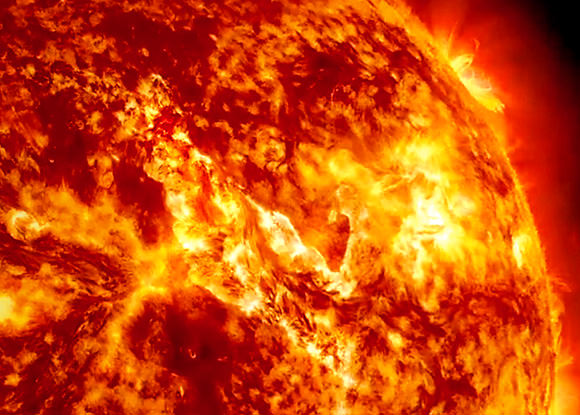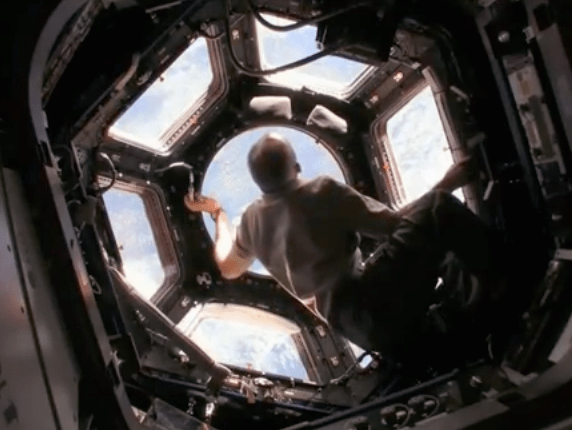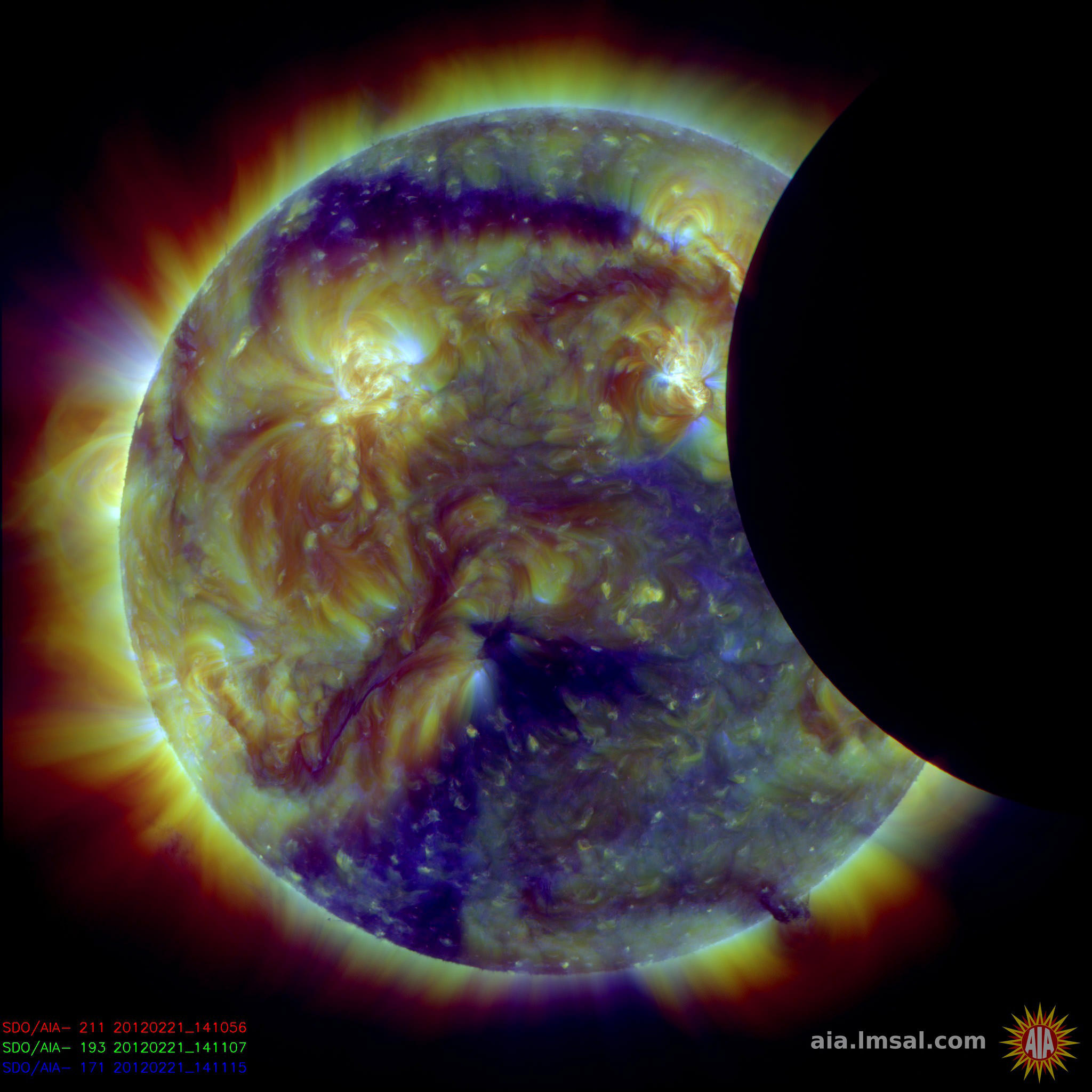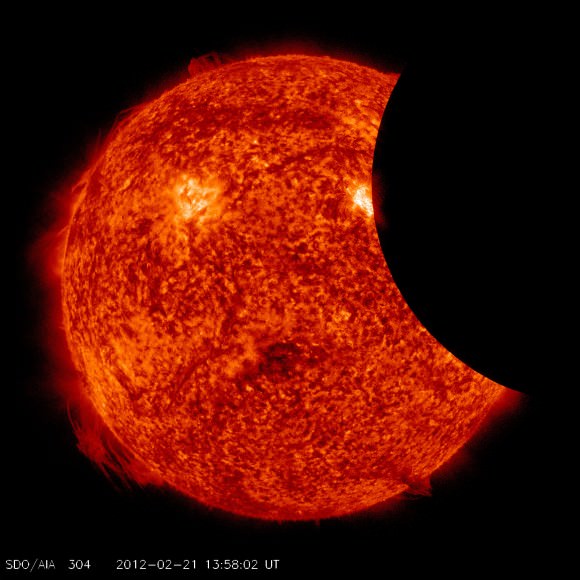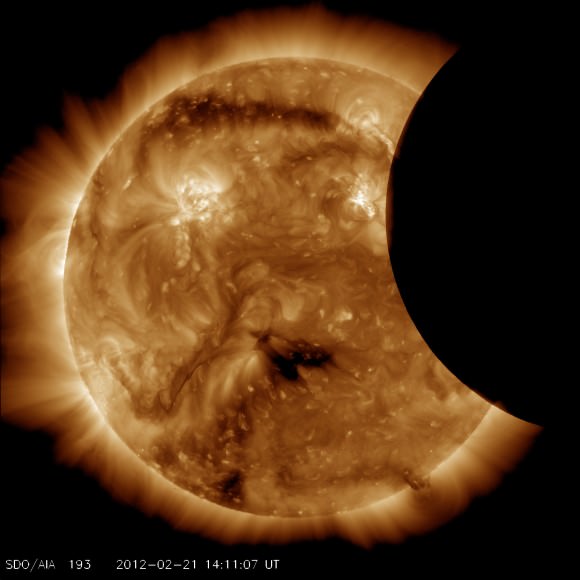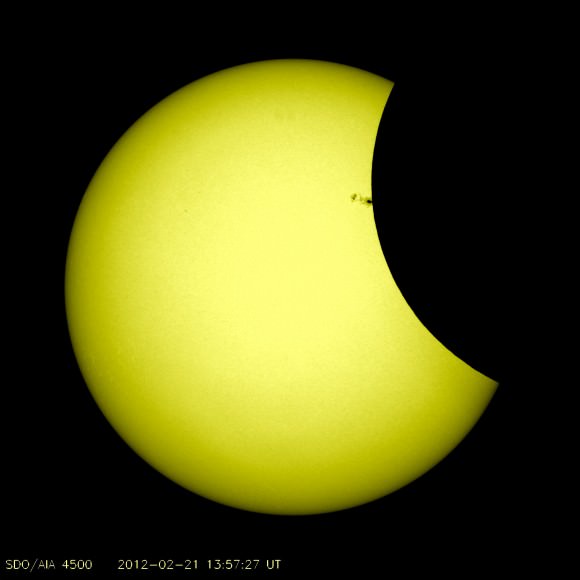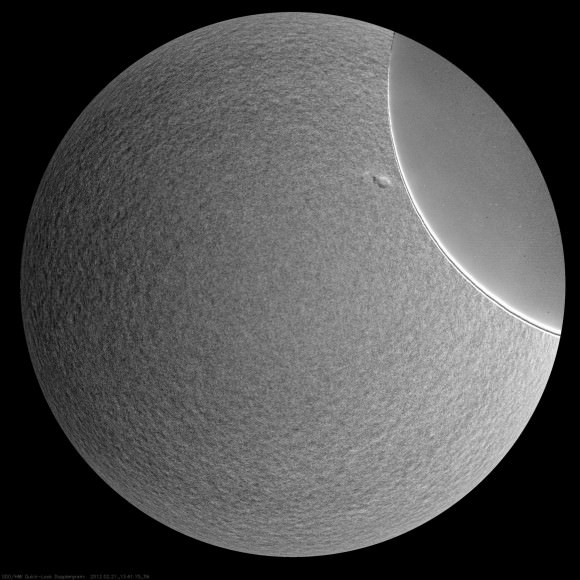Here’s your amazing oh-my-gosh-space-is-so-cool video of the day — a “canyon of fire” forming on the Sun after the liftoff and detachment of an enormous filament on September 29-30. A new video, created from images captured by the Solar Dynamics Observatory (SDO) and assembled by NASA’s Goddard Space Flight Center, shows the entire dramatic event unfolding in all its mesmerizing magnetic glory.
Watch it below:
Solarrific! (And I highly suggest full-screening it in HD.) That filament was 200,000 miles long, and the rift that formed afterwards was well over a dozen Earths wide!
Captured in various wavelengths of light by SDO’s Atmospheric Imaging Assembly (AIA) the video shows the solar schism in different layers of the Sun’s corona, which varies greatly in temperature at different altitudes.
According to the description from Karen Fox at GSFC:
“The red images shown in the movie help highlight plasma at temperatures of 90,000° F and are good for observing filaments as they form and erupt. The yellow images, showing temperatures at 1,000,000° F, are useful for observing material coursing along the sun’s magnetic field lines, seen in the movie as an arcade of loops across the area of the eruption. The browner images at the beginning of the movie show material at temperatures of 1,800,000° F, and it is here where the canyon of fire imagery is most obvious.”
Now, there’s not really any “fire” on the Sun — that’s just an illustrative term. What we’re actually seeing here is plasma contained by powerful magnetic fields that constantly twist and churn across the Sun’s surface and well up from its interior. The Sun is boiling with magnetic fields, and when particularly large ones erupt from deep below its surface we get the features we see as sunspots, filaments, and prominences.
When those fields break, the plasma they contained gets blasted out into space as coronal mass ejections… and this is what typically happens when one hits Earth. (But it could be much worse.)
Hey, that’s what it’s like living with a star!
Stay up to date on the latest solar events on the SDO mission page here.

